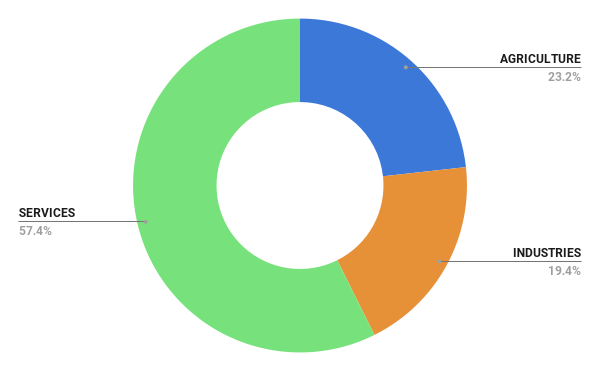Automation Ideas For Delivering Excellent HR Support
Published on September 20, 2022
5 min read

A labor force that includes individuals with diverse skills is important to economic development because they contribute to productivity, especially in developing countries like Nigeria. Investing in human capital yields returns and it is done through technology, education, and training.
The standard economic argument is that workers affected by automation will initially lose their jobs, but the population as a whole will subsequently be compensated. According to McKinsey Global Institute, they argue that higher productivity resulting from automation “implies faster economic growth, more consumer spending, increased labor demand, and thus greater job creation.” Services, Industries, and the agriculture sector are the biggest contributors to the Gross Domestic Product (GDP) in Nigeria with 57.4%, 19.4%, and 23.2% respectively. In this article, we are going to have an overview of how Human Resources activities can be automated and their benefits to foster growth in these sectors. (See chart below)
Contribution of Sectors to the GDP In Nigeria - Q2 2022

Human Resource is the bond that holds the organization’s most valuable asset: Employees. To deliver the best experience, automation can be used to streamline processes, reduce repetitive tasks, increase efficiency across the business and automate workflows to ensure HR managers can concentrate on more valuable tasks. Due to the rapid growth of technology penetration in Nigeria, businesses are investing in applications to help them hire, manage their team, run payroll, and handle employee requests.
Payroll Automation in the Age of Fintech
If there is an industry that has a hand in every other industry in the economy, it’s the finance industry. Jobs at banks and financial firms are infamous for their monotonous and boring nature, this opines that HR is central to the successful operation of this industry with technology at its core. Finance-related institutions such as banks and insurance are run by employees. With the trend toward digitization, these firms are looking for more ways to reduce inefficient activities.
Manually calculating the time or days worked, along with sick leave, benefits, and deductions leave much room for error. This leads to employees being under- or overpaid. HR automation can simplify the process by tracking and calculating everything automatically, simplifying payments, and making data much easier to find if needed for a compliance audit. SoftSUITE Payroll feature is exclusively designed for the Nigerian market for accurate payroll computation.
Recruitment Automation and a Post-Pandemic Era
The post-pandemic world has brought about changes to recruiting as more employers expect to increase their workforce and turn to recruitment automation. It does create an opportunity for businesses that are willing to be progressive and flexible to create a more transformative and rewarding employment experience that is mutually beneficial for the employee and the company. Recruitment automation can streamline candidate sourcing, posting job ads, tracking responses, CV screenings, scheduling, and assessments, which often take up a great deal of recruiters' time.
For instance, in the industries sector, engineering firms are reliant on technology and more inclined toward employing fresh graduates to build a young workforce ready to take on new challenges. This heavy reliance on technology means that these organizations are subject to constant change and need to have a high-functioning recruitment funnel.
With the Great Resignation still looming over the job market, business executives and hiring managers need to let go of the traditional methods to develop a sustainable talent pool and find the right fit for vacant job positions.
Time and Attendance: “Only time will tell”
The Media industry (e.g Radio and TV) is active 24 hours and characterized by the hiring of a great number of employees who specialize in disparate fields with sometimes odd work shifts. The use of manual attendance tracking will lead to confusion and loss of data.
Attendance automation systems make tracking work shifts hassle-free. From calculating actual hours worked, overtime, and more, these systems ensure employees get compensated appropriately for their time.
Tracking Leave Requests
In business, time is money. Inconsistent leave policies throughout the organization often cause huge costs to the company. Manually calculating and approving absences such as holidays, sick, vacation, and parental leave can be a hassle since it involves checking the employee’s leave balance and getting the manager to approve leave requests.
With HR automation, you can have a portal where your employees can request and submit leave, supervisors can approve or deny it at the click of a button while the application does the calculations and integrate into payroll.
- • Employee performance tracking, including, appraisals.
- • Learning and Development
A win-win situation
Human resources involve face-to-face human interaction regularly. HR professionals must employ critical thinking skills and be able to adapt to the specifics of each case before them.
No one can predict the future or how far technology will eventually advance, so many HR jobs and functions may be replaced with automation sometime in the future. However, the necessity of complex human interaction in HR will prevent automation from completely taking over.
Human resource is a field that is unlikely to ever be fully automated.





